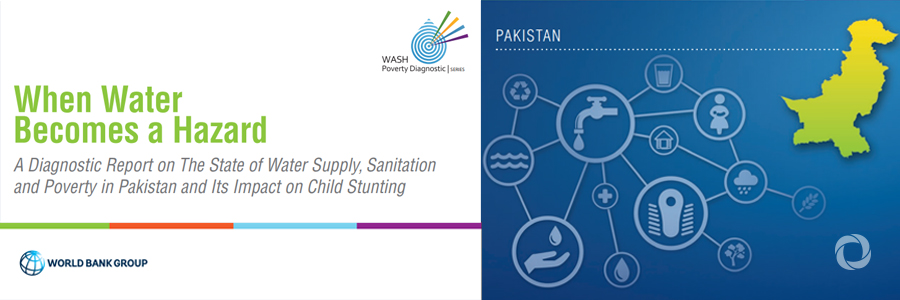The alarming state of water supply and sanitation in Pakistan is creating major health hazards for the entire population and young children are particularly at risk, says a new World Bank report.
“When Water Becomes a Hazard: The State of Water Supply, Sanitation and Poverty in Pakistan and its Impact on Child Stunting”, states that Pakistan has made significant progress on reducing poverty, improving dietary diversity and reducing open defecation. Despite this, critical markers of child health – rates of diarrhea and stunting – still do not show any real improvement.
The report finds that bacterial contamination of surface and groundwater is on the rise because of the lack of treatment of human waste. Rural areas where the majority of poor households reside are the worst affected. Contamination levels are much higher in poorer and more rural districts and there is virtually no treatment of water at the household level. Fecal waste is also finding its way into the surface soil and into the water used for crop irrigation. This is turn contaminates food supplies which find their way into urban centers posing health hazards for millions of city dwellers. Young children are most at risk due to diarrhea as well as growth faltering due to environmental enteropathy, which limits the absorption of nutrients even during periods when the child shows no signs of diarrhea—eventually leading to stunting.
Given the gravity of the problem and the levels of investment required, the report recommends a targeted and multi-tiered approach. Investments in fecal waste management systems as well as in the provision of safe drinking water need to begin on an urgent basis but these will take time to reach scale. In the meantime, there are a number of relatively low-cost interventions that can be started immediately and at scale, to protect young children. These include efforts to encourage the point of use treatment of water and community and neighborhood-based interventions to contain exposure to fecal waste so that the oral-fecal route for the transmission of disease can be weakened, if not broken.
Targeting available resources to the poorest and least well-served districts would not only maximize the direct impact of public spending, but it would also reduce the negative spillovers created by poor quality sanitation and water to neighboring non-poor areas creating a virtuous win-win cycle for all.
Read and download the full report “When Water Becomes a Hazard: The State of Water Supply, Sanitation and Poverty in Pakistan and its Impact on Child Stunting”
Original source: The World Bank
Published on 13 November 2018

